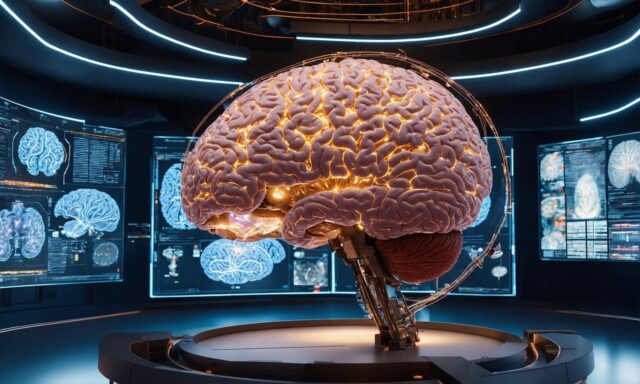
Artificial Intelligence (AI) has become an integral part of our daily lives, from voice assistants like Siri and Alexa to personalized recommendations on streaming platforms. But have you ever wondered how these machines actually work? In this article, we’ll take a closer look at the inner workings of AI and demystify the magic behind the machines.
The Basics of Artificial Intelligence
At its core, AI refers to the ability of machines to imitate human intelligence and perform tasks that would typically require human intelligence. This includes tasks such as problem-solving, learning, recognizing patterns, and even understanding natural language.
AI can be broadly categorized into two types: Narrow AI and General AI. Narrow AI, also known as weak AI, is designed to perform specific tasks, such as image recognition or language translation. On the other hand, General AI aims to replicate human intelligence across a wide range of tasks.
The Building Blocks of AI
Artificial Intelligence relies on a variety of techniques and technologies to function effectively. Let’s explore some of the key building blocks:
Machine Learning
Machine Learning is a subset of AI that focuses on enabling machines to learn from data and improve their performance over time. It involves training algorithms using large datasets, allowing the machines to identify patterns and make predictions or decisions based on that data.
Neural Networks
Neural Networks are a fundamental component of AI, inspired by the structure of the human brain. These networks consist of interconnected nodes, known as artificial neurons, which work together to process and analyze information. By simulating the neural connections in the brain, machines can recognize complex patterns and make intelligent decisions.
Natural Language Processing (NLP)
Natural Language Processing enables machines to understand and interpret human language. It involves tasks such as speech recognition, language translation, and sentiment analysis. NLP algorithms analyze the structure and meaning of text or speech, allowing machines to respond in a human-like manner.
Computer Vision
Computer Vision focuses on enabling machines to understand and interpret visual information. By leveraging techniques like image recognition and object detection, AI systems can analyze and make sense of visual data. This has applications in various fields, including autonomous vehicles, surveillance systems, and medical imaging.
The AI Workflow
Now that we have a basic understanding of the building blocks, let’s dive into the workflow of an AI system:
Data Collection
The first step in the AI workflow is collecting relevant data. This can be in the form of structured data, such as spreadsheets, or unstructured data, such as images or text. The quality and quantity of data play a crucial role in training accurate AI models.
Data Preprocessing
Once the data is collected, it needs to be preprocessed to remove noise, handle missing values, and transform it into a suitable format for analysis. This step ensures that the data is clean and ready for training the AI models.
Model Training
Model training involves feeding the preprocessed data into AI algorithms and iteratively refining the models. This process allows the models to learn from the data, identify patterns, and make predictions or decisions. The training phase may require significant computational resources and time, depending on the complexity of the problem.
Model Evaluation
After the models are trained, they need to be evaluated to assess their performance. This involves testing the models on a separate dataset and measuring metrics such as accuracy, precision, and recall. The evaluation helps determine the effectiveness of the AI models and identify areas for improvement.
Deployment and Optimization
Once the models are deemed satisfactory, they are deployed in real-world applications. This can range from chatbots and recommendation systems to autonomous vehicles and fraud detection systems. Continuous optimization and monitoring ensure that the AI models adapt to changing conditions and deliver accurate results.
The Future of Artificial Intelligence
As AI continues to evolve, we can expect to see even more advancements in the field. From self-driving cars to personalized healthcare, the potential applications of AI are vast. However, ethical considerations and responsible AI development are crucial to ensure that these technologies benefit society as a whole.
In Conclusion
Artificial Intelligence is no longer just a concept from science fiction; it’s a reality that is transforming the way we live and work. Understanding the underlying mechanisms of AI helps us appreciate its capabilities and opens up a world of possibilities for innovation.
So the next time you interact with a voice assistant or receive a personalized recommendation, remember the magic happening behind the scenes, powered by the wonders of Artificial Intelligence.












